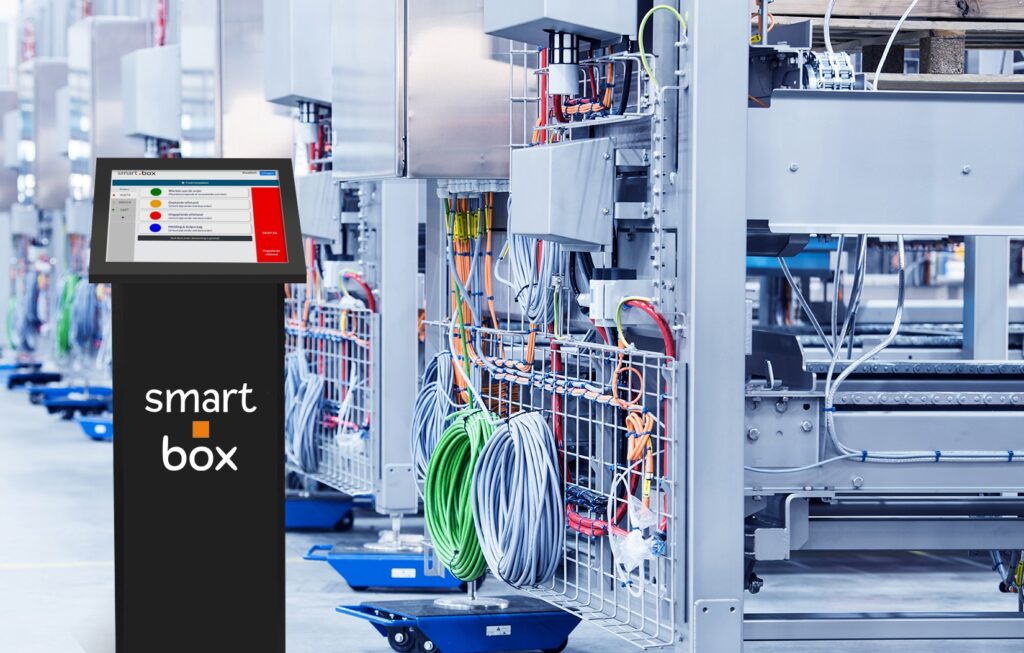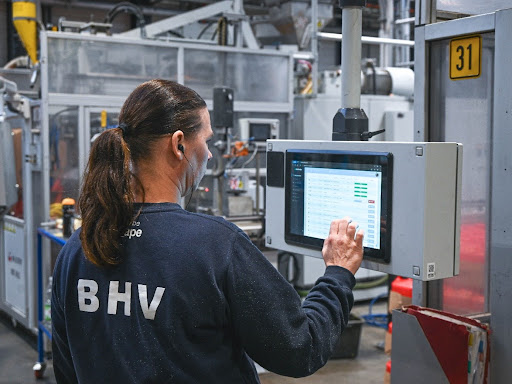/ Smart manufacturing / Machine efficiency / Overall Equipment Effectiveness (OEE)
OEE is a key performance indicator used in production environments to assess how efficiently a machine, production line, or entire factory is operating. It provides valuable insights into where improvements can be made.
We assist companies in identifying hidden inefficiencies within their production processes and implementing targeted improvements. This results in increased efficiency, reduced costs, improved quality, and a stronger competitive edge in the market.





OEE provides a percentage that reflects how much of the planned production time is actually used productively. It is based on three core factors:
Availability:
– This measures the actual time the machine or line is available for production compared to the planned time. It accounts for interruptions like breakdowns, maintenance, and start-up times.
Performance:
– This measures the machine’s actual production speed compared to its theoretical maximum speed. Delays, minor downtimes, and reduced speeds all affect this factor.
Quality:
– This represents the percentage of good products produced without defects, relative to the total output. Rejected or reworked products are not included in this calculation.
100%: Perfect production, without losses.
85% or higher: World class, a goal for top companies.
60-85%: There are still opportunities for optimization, but the process is running reasonably efficiently.
Below 60%: Major improvements are possible.
“Targeted improvement actions are now possible to increase machine performance.”

You want to fully deploy machines and achieve maximum efficiency. This also applies to Isiflo (part of Aalberts), where the choice was made to apply the OEE measurement. The parameters (numbers, speed) and error codes (downtimes/malfunctions) are pushed by the machine to the smart.box, the employees validate the code and sometimes have to explain the reason for the downtime/malfunction.
This makes it possible to monitor production in real time. This makes adjustments much easier, plus you gain insight into implementing structural improvement actions and monitoring the effect.

Working Digitally
Every employee always receives only the correct order information in a user-friendly way.
Monitor and control
You want to monitor daily operations and make immediate adjustments as needed.
Transparency in the office
Gain insight into how much your support and service departments can contribute to value-added activities.
Workload planning
A reliable output starts with the right input. Seek a smart solution that can continuously monitor and (re)schedule 1000+ orders.
Data-driven stand-up meeting
Always up-to-date operational data for Safety, Quality, Delivery, Cost and People (SQDCP).
What you measure, you know
Let's integrate all production and logistics resources to enhance the order flow.
Pull planning
Prevent overproduction and high WIP in assembly and job shop environment.
Assembly
Prevent overproduction and high WIP in assembly and job shop environment.
Zero mistakes
Let’s optimize processes in a way that continuously minimizes the chance of errors
OEE measurement
Maximizing machine productivity starts with understanding the biggest disruptions and downtime.
Collaboration between human and machine
Let's integrate all production and logistics resources to streamline and enhance the order flow.

